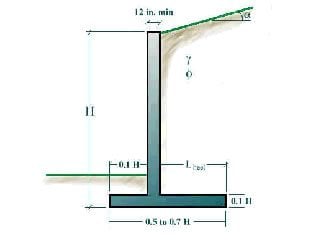Reinforced concrete construction typically consisted of 4 or 6 100 mm or 150 mm thick cast in situ concrete external walls that were full height to the parapet and continuous with the foundations figure 1.
In situ concrete wall thickness.
Cast in situ concrete is the easy and conventional method that we have been seeing for past decades.
Steel bars are placed horizontally and vertically in the wall in a grid pattern according to the design drawings.
Slab thickness varies from 120 mm 2.
Cast in place concrete also known as poured in place is a concreting technique which is undertaken in situ or in the concrete component s finished position.
It has many advantages over the cast in situ concrete method for construction.
Concrete building construction concrete construction can be identified by thick walls and deep window and door reveals.
Generally if wall thickness is smaller than 100 mm then reinforcement bars are installed in one layer.
When concrete for walls such as these is finally poured there may be just 50 mm between the face of a wall and the first row of rebar buried within it or 50 mm of cover as structural engineers like to say.
In construction engineering there are different ways in which concrete in situ or precast concrete is being prepared for use at job sites.
Floor slabs are either cast in situ flat slabs or less often precast hollow core slabs.
However reinforcement bars shall be placed in two layer if wall thickness is greater than 200 mm.
That is the centerline of the bar must be within 3 8 inch in any direction from the location indicated on the plans or else it is out of tolerance and therefore violates the specification.
Concrete pouring the for concrete thickness of 600mm shall be considered as mass concrete and shall be done as per section v 5 2 4 of this document and shall conform to the submitted method statement for mass concreting works.
Precast concrete is the new construction technic that makes construction speedy and economical on the large construction projects.
Cast in place concrete is the preferred choice for concrete slabs and foundations as well as components such as beams columns walls roofs and so on.
The in situ concrete is mostly used for smaller construction jobs at site due to it nature.
Usually the wall layout is symmetrical with respect to at least one axis of symmetry in the plan figure 2.
The in situ construction with soil cement shall be limited to single story with a wall height not exceeding 3 2 m and a minimum wall thickness of 300 mm.















































